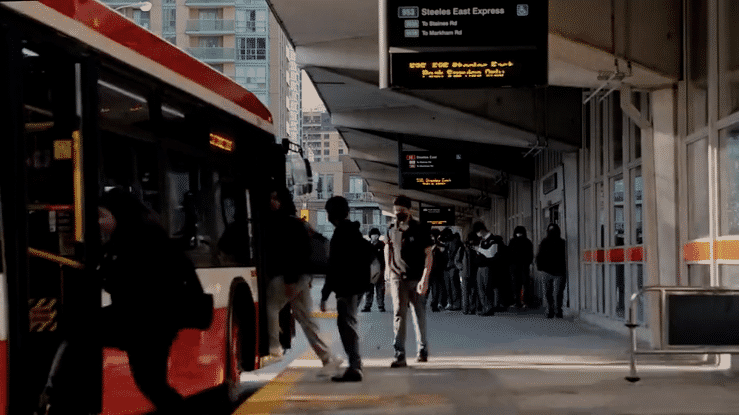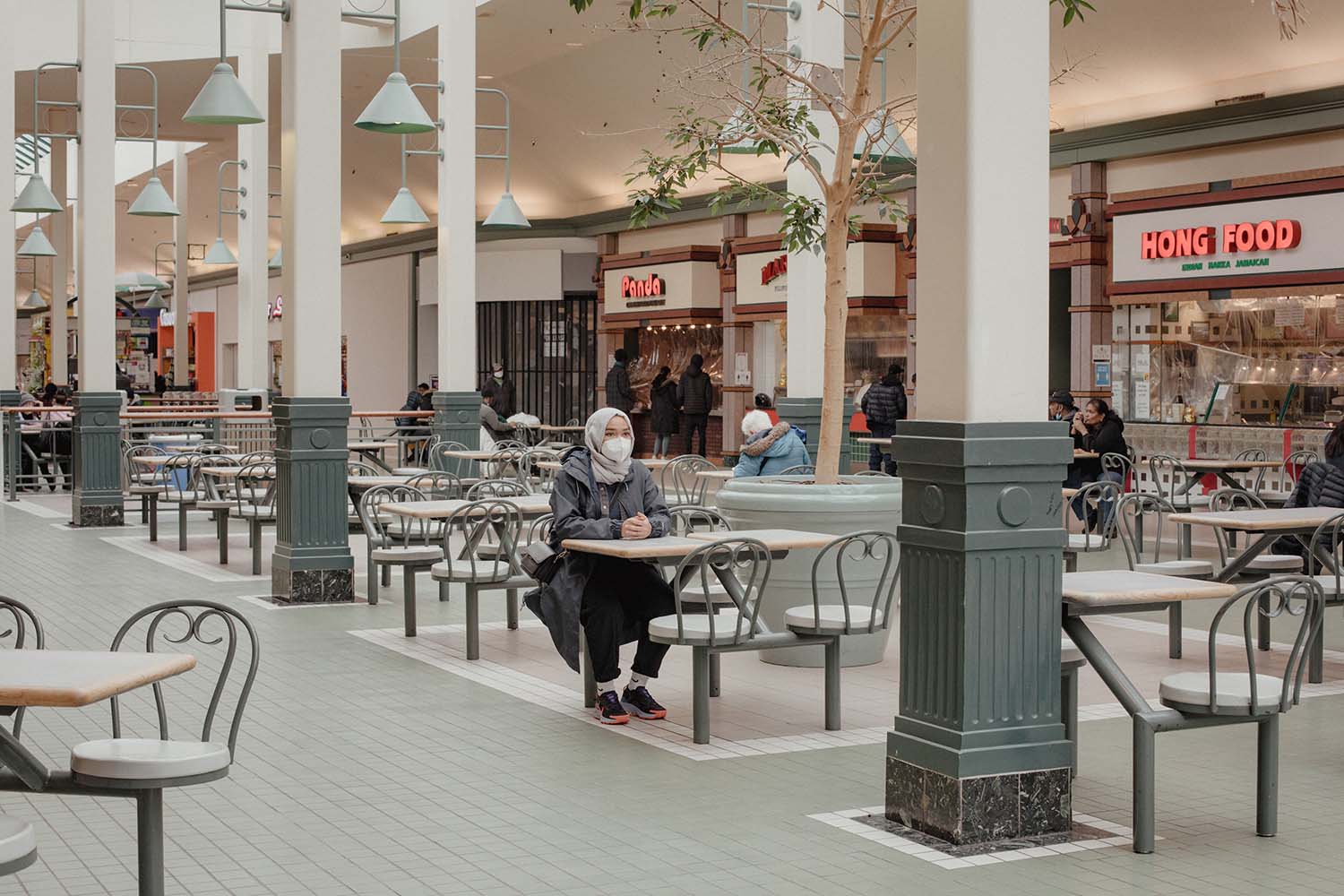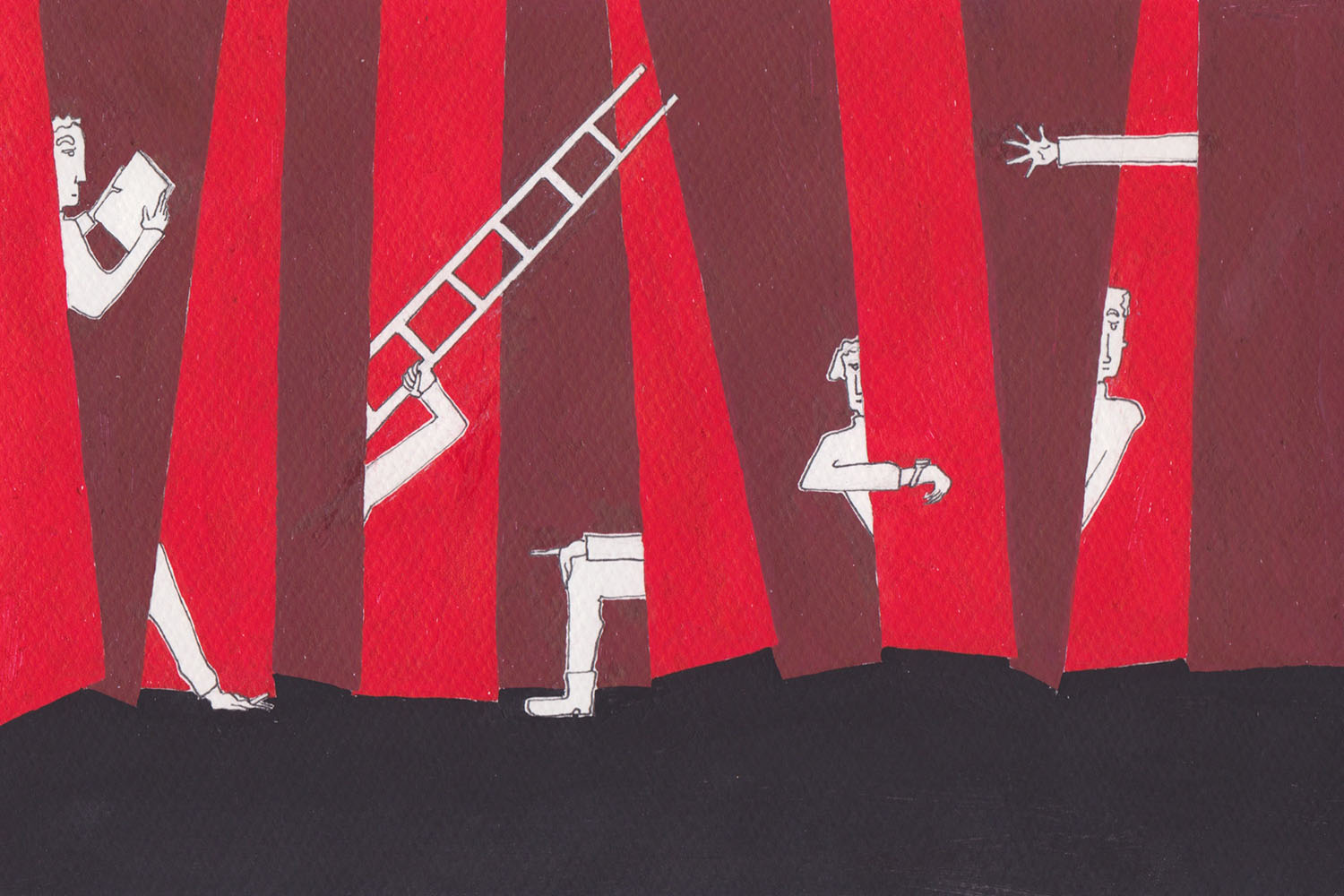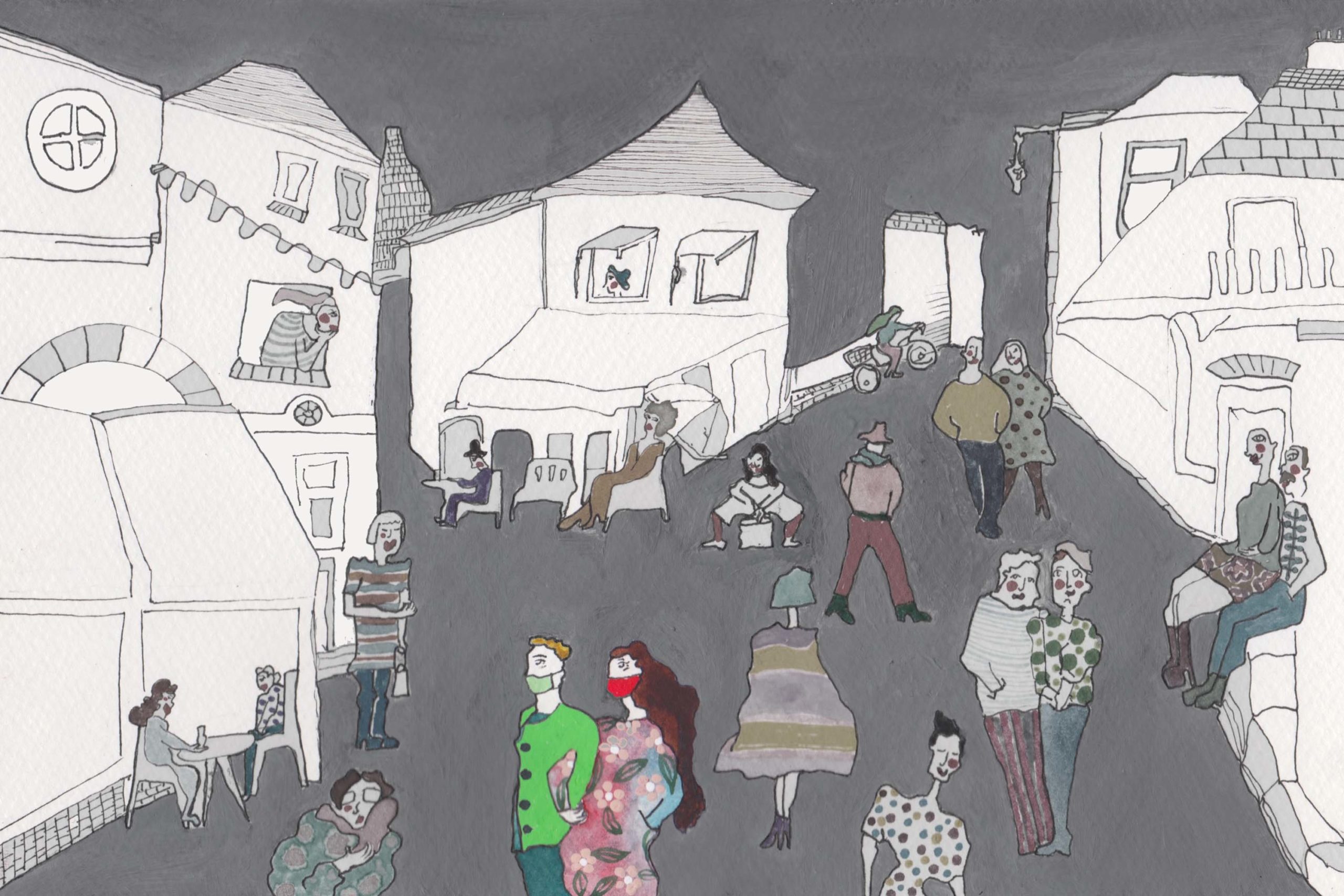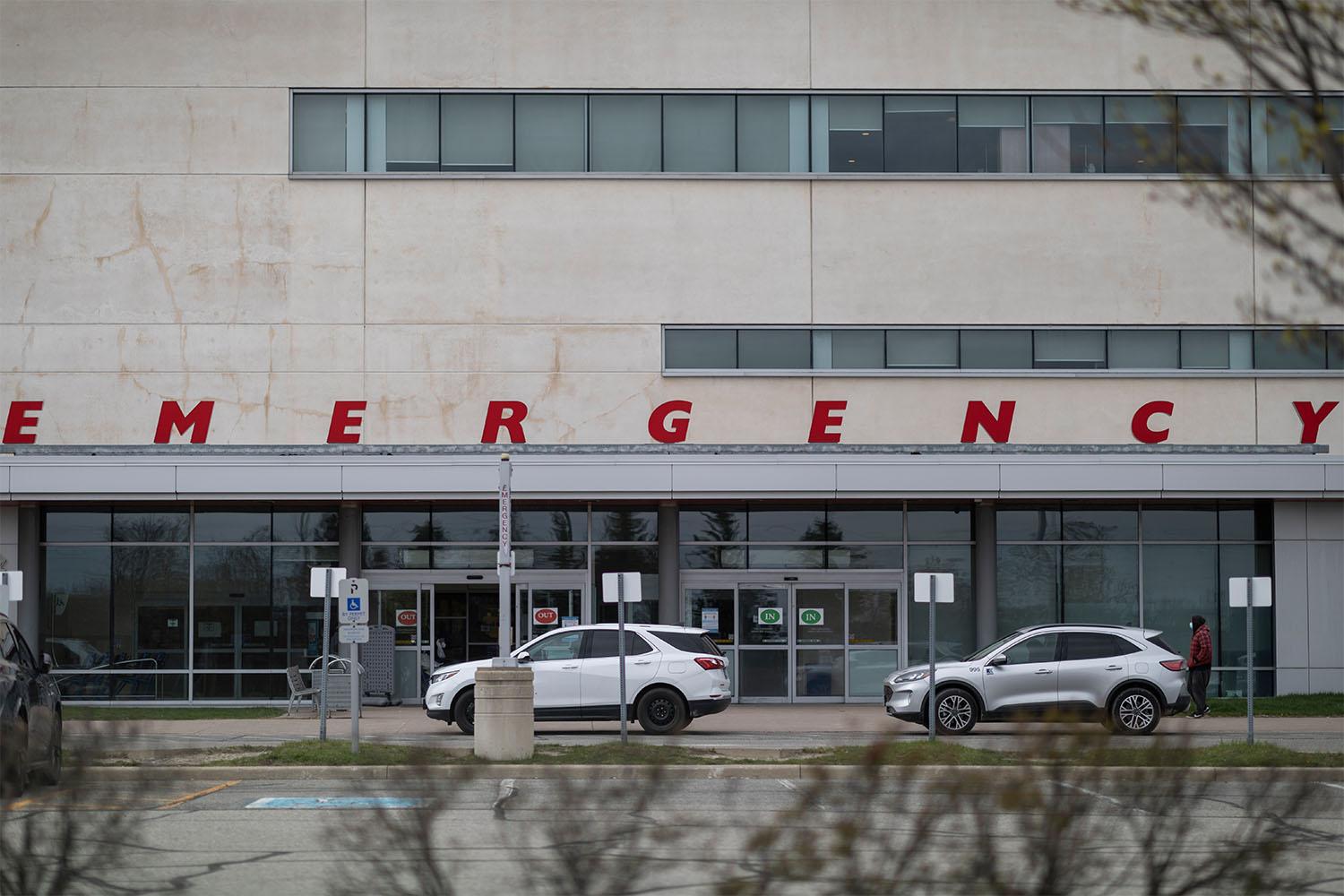
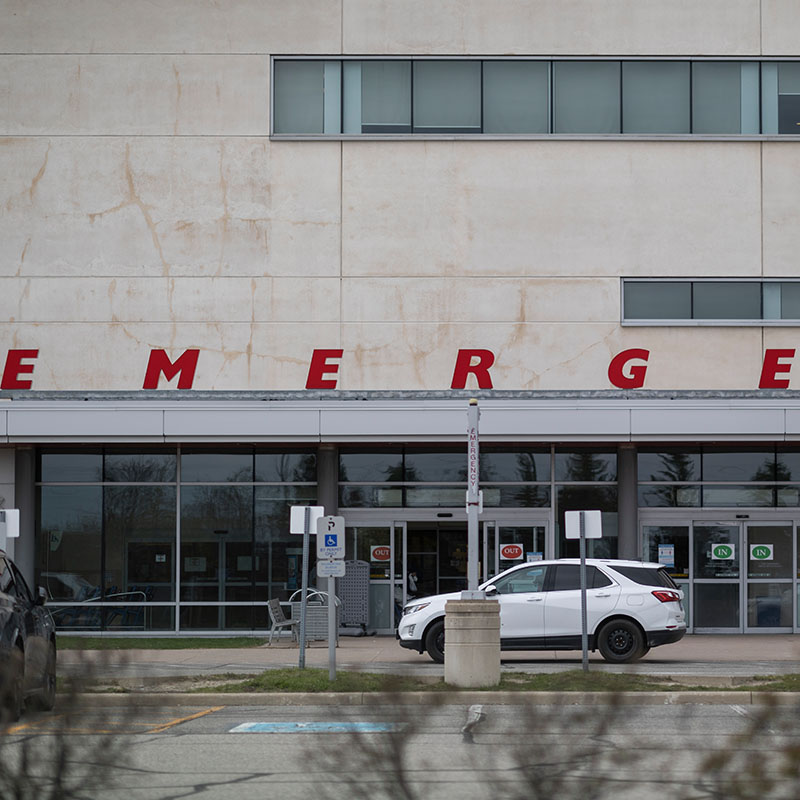
When the third wave of COVID hit Brampton Civic Hospital in April of 2021, the institution went from crowded to packed to bursting. Infection rates across the city exceeded 20 percent, and entire families were coming to the hospital in need of critical care. Patients were consigned to hallways, janitors’ closets, and children’s waiting areas. The emergency room was so busy that simply moving people through the space was a logistical nightmare.
Human resources were stretched to the breaking point, with doctors taking on nursing duties and administrators staffing the concierge desks. “At one point during the third wave,” recalls Brampton Mayor Patrick Brown, “we were sending 100 patients per week by air ambulance to hospitals as far away as Windsor, Niagara, and Simcoe County. I kept thinking: ‘This was all so predictable.’”
Seemingly every public official in Brampton had seen the crisis coming. Ontario has the lowest hospital capacity per capita of any region in the United States or Canada, but even by these standards Brampton was under-resourced. Brampton Civic is the only major medical centre in the 650,000-person municipality, and before the pandemic, the hospital sometimes had 20 to 40 percent more patients than it could handle. “We’d need an additional 850 beds just to match the provincial average,” says Rowena Santos, a Brampton city councillor. As a single mother, Santos had seen the predicament firsthand. “I remember, in the pre-Covid times, coming to Brampton Civic with my sick three-year-old,” she says, “and finding the kids’ waiting room occupied by patients in stretchers.”
Adele MacKenzie, a Brampton resident who works in the retail sector, has a teenage daughter with depression, anxiety, Tourette’s syndrome, and OCD. On several occasions, when MacKenzie’s daughter came home from school weeping inconsolably or catatonic and unable to speak, MacKenzie would take her to the psychiatric emergency ward at Brampton Civic. “We’d always bring our phone chargers with us,” says MacKenzie, “because we knew we’d be there all night.” Over multiple visits, she became familiar with the rhythms of ER life. She watched as the daytime patients—a mostly quiet group, including many young people—thinned out, making way for an older, late-night cohort with acute psychiatric needs. “One man arrived in the middle of the night shouting and swearing,” she says. “He had an IV drip, which he ripped out of his arm. There was blood all over the place. I thought, ‘Is this really something a sixteen-year-old should be watching?’”
In Brampton, stories like MacKenzie’s had been ubiquitous for years, and in 2019, the city got involved, even though health is a provincial matter. With the help of fellow councillor Harkirat Singh, Santos circulated a petition to declare a hospital emergency and quickly amassed 20,000 signatures. On January 22, 2020, the vote went before council, where it got unanimous support. “Normally, you declare an emergency when there’s a natural disaster,” says Brown. “But we declared it over health care because the situation was that dire.”
The declaration made national news, only to be displaced, three days later, by another health emergency: on January 25, Canada got its first known case of COVID, and the state of Brampton Civic—not to mention countless other Ontario hospitals—quickly deteriorated from an already low baseline. All of which raises an obvious question: If our hospitals were grievously overloaded going into the pandemic, what will they be like after?
“The thing you need to understand about our health system is that we don’t have one… It is more aptly described as a field of silos.”
We are now exiting the most acute phase of the crisis, but COVID is still with us and will be for the foreseeable future. In the worst-case scenario, the virus will periodically overwhelm our capacity to monitor or contain it. New waves will arrive, temporarily returning us to a world of lockdowns and mask mandates and virtual schooling. In a more optimistic scenario, the virus will become endemic, like a seasonal flu. Even this situation won’t be easy to manage. Before COVID, the annual flu season pushed some hospitals to the limits of their capacity. Now, we’ll have two flu seasons, which will likely happen concurrently.
At the same time, the health system will have to catch up on thousands of deferred procedures while also contending with a rapidly aging population. Before the pandemic, pundits often wrote hand-wringing op-eds about how the boomer generation would soon enter old-age, a phase in which seemingly every ailment becomes both more prevalent and more dangerous. This moment has now arrived. The oldest boomers are 76. By 2030, all of them will exceed retirement age.
Throughout the first two years of COVID, our hospitals survived thanks to the grit and determination of their staff—the doctors, nurses, managers, and porters who forswore vacations, worked back-to-back shifts, and put all their energy into averting disaster, as ordinary people so often do in times of crisis. But these resources are now dangerously depleted. A 2021 study from the Ontario COVID-19 Science Advisory Table found that the proportion of health care professionals experiencing severe burnout nearly doubled during the first year of the pandemic. The number has surely increased since then.
If the system is to persevere, it will need more help than its exhausted rank-and-file workforce can offer. While researching this article, I spoke to roughly 40 administrators, professors, doctors, data gurus, consultants, and advocates to figure out how we might build the necessary hospital capacity to survive the next few years. Some of the experts I spoke to recommended radical reforms. Others suggested quick, easy-to-implement measures. All agreed that the status quo is not an option. The emergency phase of the pandemic is behind us, but if we don’t prepare for the next phase, it could be nearly as intense as the one we just endured.
The best way to protect the health care system from COVID is to protect people from COVID. To do that, we will need, above all else, a sustained investment in variant-specific vaccine development or procurement, to ensure that we can quickly inoculate our population against whatever new forms the virus takes. Our governments should also invest in anti-viral treatments and home tests, which, in an ideal world, would be abundantly available and free. Canadians could test themselves regularly; upon receiving a positive result, they could quickly obtain an antiviral medication, like Paxlovid, which would make them unlikely to need further medical attention during the course of their infection. Drawing on waste-water data, public-health officials could alert people when their neighbourhood shows early signs of an outbreak, and they could ensure that pharmacies in the area are stocked with the appropriate drugs.
These measures would reduce the percentage of COVID patients in need of acute care, thereby freeing up hospitals to complete backlogged procedures. To that end, governments could offer temporary funding, as they did after the 2003 SARS epidemic, so that surgical suites and imaging centres can run overnight (as some already do). Staff could be offered generous bonuses in return for overtime work. And, wherever possible, pieces of non-emergency hospital infrastructure, like day-surgery centres or MRI units, could be sealed off from the rest of the building, with their own entrances and exits and staff-screening systems. “Because these units are able to plan ahead,” says Jennifer Zelmer, president and CEO of the non-profit Health Excellence Canada, “their staff can ask patients to test for COVID or isolate for a few days before coming in.” The units could then function dependably, even in the event of another COVID wave
We could also move to address the most pressing issue—labour. Here’s the bad news: due to pandemic burnout, health care workers are exiting the profession at higher rates than ever before. A recent survey from the Registered Nurses’ Association of Ontario estimated that, between 2021 and 2023, roughly 25 percent of nurses in the province will have left the industry. And it’s not just retirees who are quitting: 13 percent of Ontario nurses between the ages of 26 and 35 said they will likely change careers soon. Hospitals are also reporting shortages of physicians, lab technicians, paramedics, and porters.
Subscribe
Get our latest stories delivered to your inbox.
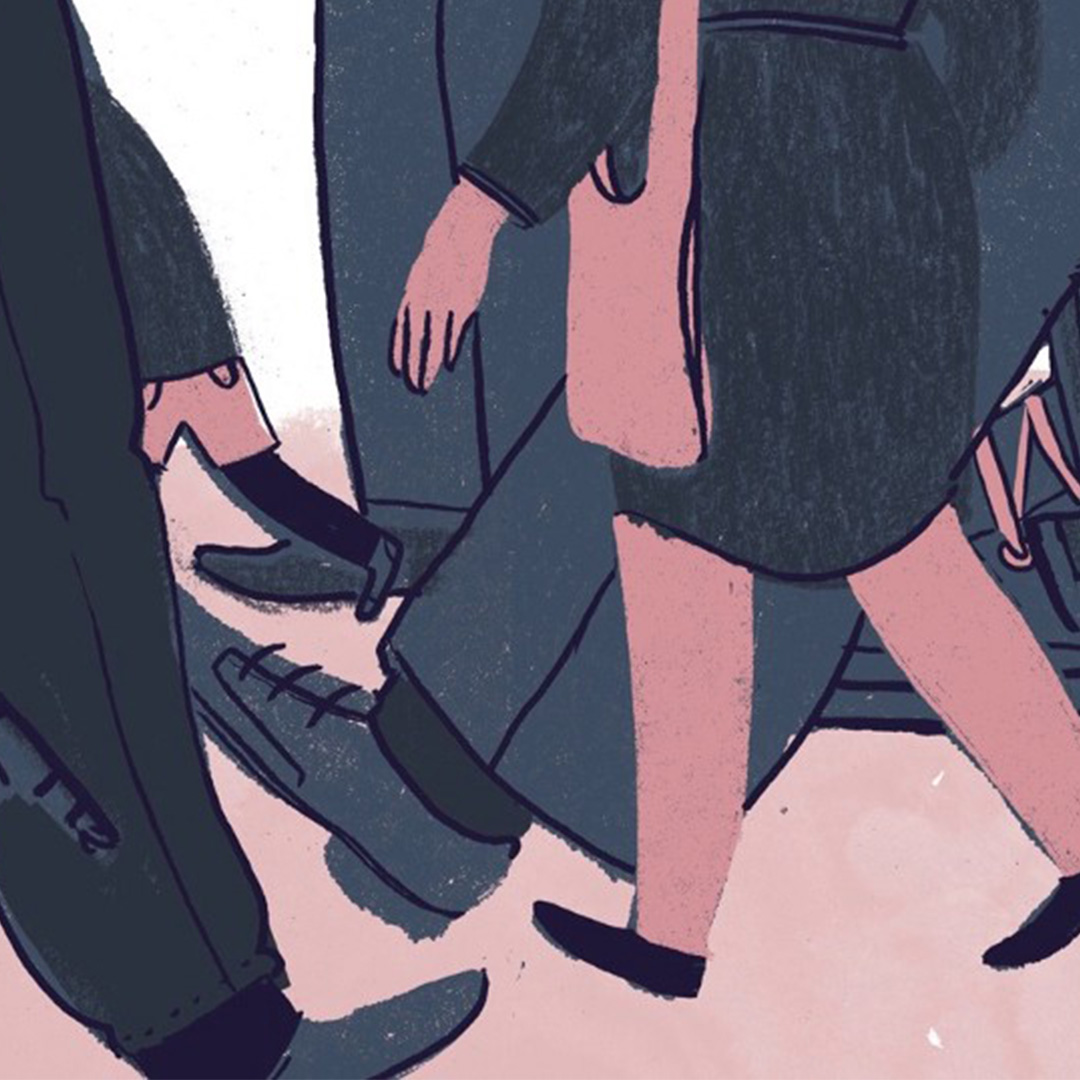
Here’s the good news: there are thousands of health care professionals right here in Ontario, ready to work. Currently, the pathway to licensing for internationally trained health workers is so cumbersome that many are forced instead to drive Ubers or haul boxes in warehouses. Nurses travel here with temporary permits to work as home caregivers and find that their visas prevent them from moving into the public sector. Physicians are granted immigration status precisely because of their impressive credentials, but they soon learn that, in order to practice, they first need to complete a domestic residency, and the number of spots for them is sorely limited.
We could change all of this in a heartbeat. When foreign-born nurses—like those working in domestic settings on temporary visas—apply for permanent resident status they can find themselves waiting in limbo for two to three years, but we could easily move their applications to the front of the queue. Other provinces already have programs whereby, in lieu of residency, internationally trained doctors can practice for three months in a supervised setting and then move briskly into the profession. It wouldn’t take much to invest in these programs and scale them up. “We have a lot of one-off solutions,” says Joan Atlin, a director at World Education Services, an organization that helps internationally trained professionals get suitable work in Canada. “We just need to put them together into a coherent whole.”
All of these measures are what you might call quick fixes: relatively cheap, hasty reforms that can reduce the post-COVID strain on our hospitals. But—to use the language of health care—they are treatments, not cures. Nobody in health-systems planning believes that we can beef up our under-resourced hospitals simply through clever, cost-effective hacks. To build a stronger sector, we will need systemic change too.
Broadly, there are two schools of thought on what such change might look like. One—call it “resource theory”—emphasizes that care costs money, and we need more of that. This was the argument of a 2019 report from the Ontario Hospital Association, which noted that to get provincial bed counts on par with the national average, we’d need a $4 billion investment.
Another viewpoint—call it “efficiency theory”—posits that, when a health system is inelegantly designed, it can generate remarkably low returns on government dollars. Put funds into such a system, and you end up spending a great deal but buying relatively little. Over the past two decades, Michael Decter, former deputy health minister of Ontario and a prominent voice for reform, has argued that our system needs to make better use of the resources it already has. When it comes to health care, he said in a 2012 speech, government money buys “either more of the same or actually the same with higher pay attached.”
Proponents of efficiency theory often point out that, of the roughly 34,000 hospital beds in Ontario, over 5,000 are typically occupied by people who don’t need to be there. If hospitals were more integrated—that is, if they were working closely with external health providers and swiftly discharging patients into long-term care or homecare—they could greatly expand capacity without having to buy anything, or so the argument goes.
Both theories are right and wrong. It is true that you cannot fix an imperfectly designed system simply by throwing money at it. But when pundits argue that, through savvy design alone, we can somehow increase hospital capacity at little-to-no cost, they are indulging in fantasy. Any reasonable plan for hospital reform must proceed from two premises: first, that our system is inefficient and needs to be improved, and second, that creating such a system—even if it saves us money in the long run—will cost us dearly today. A well-designed house can stand for centuries, but we cannot build it on the cheap.
When pundits argue that, through savvy design alone, we can somehow increase hospital capacity at little-to-no cost, they are indulging in fantasy.
Perversely, the Ontario hospital system is both lean and inequitable. While no region in the province has a high number of beds, some have a significantly higher number than others. Santos, the Brampton councillor, has noticed this irony. “You go to our neighbouring municipality, Mississauga, and they’ve got three hospitals,” she says. “Toronto has too many to count on my hands.”
Duncan Sinclair, former dean of the Faculty of Medicine at Queen’s University, has a succinct explanation for this disorganized state of affairs. “The thing you need to understand about our health system,” he says, “is that we don’t have one.” The industry, he argues, is so fragmented and poorly coordinated that we shouldn’t even speak of it as a single entity. “It is a non-system,” he adds. “It is more aptly described as a field of silos.”
In Canada, health care was never designed holistically. Rather—as David and Rosemary Gagan explain in their book For Patients of Moderate Means—the sector came together piecemeal, over hundreds of years. In the nineteenth century, hospitals were basically gifts, their capital costs underwritten by wealthy donors or religious orders or the proceeds of charity balls, dances, and raffles. The underlying ethic was one of localism and humanitarian goodwill: you gave to your community hospital because it was yours. And while you wanted to be seen supporting the institution, you certainly didn’t want to end up in it.
Hospitals, after all, were drafty and vermin-infested—intended strictly for the indigent. Their main goal, it seems, was to allow paupers to die their tubercular or choleric deaths in walled-off chambers away from public view. Among well-heeled Canadians, only the most intrepid set foot in a hospital and only for the purposes of sightseeing. Anybody who could afford health care got it instead from visiting physicians or in a doctor’s private “surgery.”
By the early twentieth century, all of this had changed. New scientific advances—from germ theory to x-rays—had transformed hospitals into citadels of expertise and technological sophistication. But advances in medical science didn’t yield advances in big-picture organizational efficiency. There was still no robust, centralized hospital bureaucracy, just the old patchwork of private institutions, funded by charities (and sometimes government grants) and increasingly sustained by patrons’ fees. Wealthy patients paid lavishly for hospital access, covering their own costs and subsidizing care for the poor, who were often admitted for free. To make this hybrid philanthropic-business model work, hospital staff segregated people by class. Paying patrons were spared the sights and smells of the crowded, poorly ventilated public wards. Poor patrons were barred from the dining rooms where their well-to-do peers ate multi-course dinners off fine China.
The stock market crash of 1929 wiped out a great deal of private wealth and also threatened to wipe out the health system. Hospitals were experiencing increased demand, thanks to an aging patient base and a rise in urban migration, which separated Canadians from the rural familial networks that had provided informal care. At the same time, erstwhile members of the middle and upper classes, suddenly in reduced circumstances, found they could no longer afford exorbitant doctors’ fees. And so hospitals faced a cash crunch: costs continued to rise and revenues decreased.
All of this happened against a backdrop of labour unrest and agrarian revolts, which culminated in the 1944 election of North America’s first socially-democratic government, led by Tommy Douglas. A Baptist minister and ardent reformer, Douglas introduced a single-payer health system first for hospitals and then for all physician services in the province, establishing a model to be emulated countrywide.
People often think of the federal Medical Care Act of 1966—which ensured that all Canadians would receive free health care—as the culmination of Douglas’s dream. This is only half true. Like any astute reader of Marx, Douglas believed that revolutions come in stages. The first stage would be the establishment of a single payer. The system would stay as it was—hospitals would still be independent corporations, doctors would charge as much as they’d charged before—but the bill would go to the government instead of the patient. The goal wasn’t to reimagine health care but rather to make it freely available. Once universal care had been established, Douglas reasoned, there’d be time to enact the second stage of the revolution, in which the system gets remade as a single entity—coordinated, centralized, and government-run. That second phase never came.
And so we have the health system of today, which is really just the old patchwork system of the nineteenth and early-twentieth centuries but underwritten, mostly, by government resources. Even aspects of the old funding model persist. If an Ontario municipality wants a new hospital or a new wing of an existing hospital, it must raise enough money to cover 10 percent of the capital costs and 100 percent of the costs associated with equipment and furnishings.
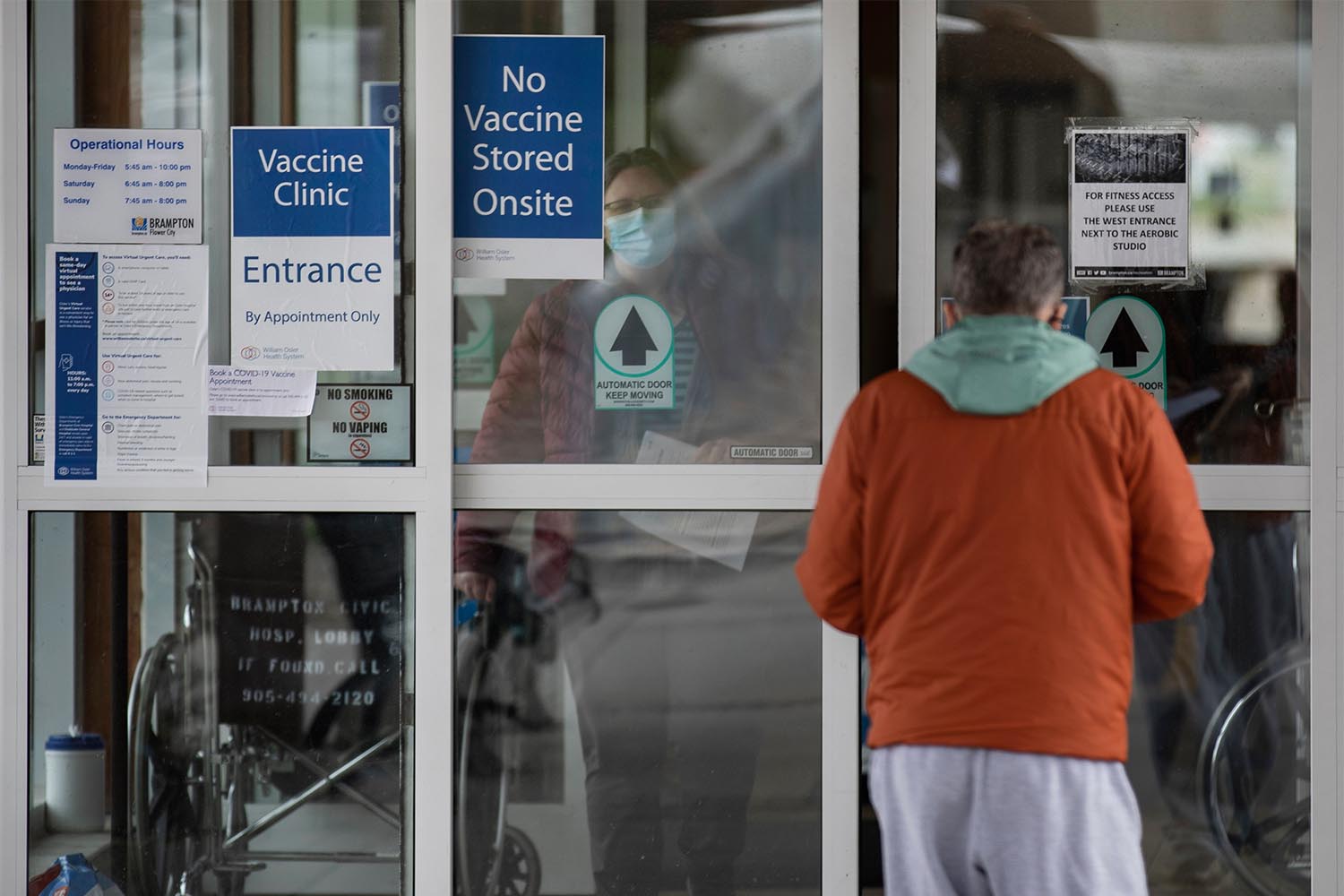
This policy is meant to encourage citizens to support their own communities, but it’s clearly a vestige of the old philanthropic Victorian ethos, and it confers an advantage on wealthy municipalities that can raise vast sums from donors. In a recent fundraising campaign, the Scarborough Health Network Foundation pointed out that the suburb currently receives less than 1 percent of hospital donations in Toronto, although it has 25 percent of the city’s population. In 2022, hospitals are still, in a meaningful sense, charities. And they’re still stratified by class.
They’re still chaotic, too. When Mike Harris took office as premier of Ontario in 1995, the province was running a $10 billion annual deficit, and yet a third of its budget was going to health care. There was bloat and redundancy: the province had 225 independent hospital corporations, the government was subsidizing thousands of beds that weren’t being used, and hospitals within walking distance of one another were nevertheless offering identical services.
In 1996, Harris established the Health Services Restructuring Commission (HSRC), an independent agency charged with imposing order on the sector. The HSRC went on to forcibly merge hospitals with one another, thereby eliminating 69 corporations and reducing the number of beds from more than 38,000 to the roughly 34,000 we currently have.
In some respects, the endeavour was successful. By dissolving small corporations into larger entities, the commission pooled resources and knowledge, creating the technologically sophisticated “super hospitals” of today. And because hospitals had fewer beds, they were forced to become more efficient. They became choosier about whom they admitted, refusing overnight treatment to patients who could safely convalesce at home. And they invested in laparoscopy and other forms of minimally invasive surgery, so that procedures that once required lengthy admissions could be done instead on an outpatient basis.
If the HSRC story is a study in the benefits of efficiency, it’s also a cautionary tale about the dangers of underfunding. In their report to the government, the HSRC had recommended not only cuts but also investments—specifically in long-term care, homecare, and mental health care—to take pressure off the hospitals. Harris, however, was better at cutting than spending. To his government’s credit, it did expand long-term care (although the sector has since atrophied), but it didn’t invest heavily in psychiatric or homecare services.
And so hospitals found that, once they’d admitted patients, they were unable to swiftly discharge them because other parts of the system were so grievously under-resourced. Beds that could’ve been quickly vacated instead remained occupied. “You had patients staying for days, weeks, and—in a small number of cases—years because there was nowhere else for them to go,” says Anthony Dale, president and CEO of the Ontario Hospital Association. “Our hospitals were jammed to the rafters. They regularly exceeded 100 percent occupancy.”
The HSRC had tried to make the health sector less of a patchwork and more of a coordinated system, the kind that carefully uses resources. But you can’t use resources—carefully or otherwise—if those resources don’t exist. Our hospitals were meant to become thrifty, but by 2019 many instead had become threadbare. Then, of course, the pandemic hit.
In health-systems planning, “integration” has become a buzzword, and like all buzzwords it’s worthy of both our curiosity and our suspicion. To take pressure off our hospitals, the system really does need to become less siloed—that is, more integrated. But if we want to build such a system, we’ll have to actually pay for it. Without investment, integration will never achieve what we need it to achieve.
This February, to better understand the potentialities and limitations of health-system integration, I visited the COVID-19 Outreach Centre in Crescent Town, an East Toronto neighbourhood with a majority immigrant population. The centre—established in the spring of 2020, with the help of Michael Garron Hospital—is a one-stop shop for seemingly disparate health services. It is situated in a pre-exiting clinic, the Crescent Town Health Centre, in the middle of a once futuristic (now neglected) high-rise complex of concrete towers connected by elevated walkways. I was met there by Nadjib Alamyar—a senior manager at WoodGreen, one of the largest community-support agencies in the city—whose colourful shirt juxtaposed the monochrome surroundings. (Alamyar has since left the centre to take a job elsewhere.)
When clients arrive at the centre, Alamyar explained, they can immediately get a PCR test or a consultation with a primary-care provider, who can check their heart, lungs, or blood pressure, since a person with COVID-like symptoms may be suffering from other ailments. If necessary, the care provider can have a conversation with the client about self-isolation and the challenges it imposes. Does the client have money for food? Are they able to take time away from work? If the answer is no, the centre might provide free food deliveries or give the client a gift certificate to the nearby grocery store or brief the client about their right to paid sick leave.
Since the centre opened, Alamyar explains, people have arrived with problems that have little to do with COVID—isolation, psychiatric challenges, unemployment, food insecurity, and precarious immigration status—which case workers at the site try to address as best they can. They offer basic counselling, referrals to employment agencies, or help filling out applications for government benefits. “There’s a lot of isolation in this community,” says Alamyar. “If you arrived in Canada during the pandemic, you probably struggled to build relationships. So, services like this—a COVID testing centre—become, by default, your community centre.”
The site doesn’t look like much—a suite of narrow, fluorescent-lit offices—but it is a model for what local health organizations can aspire to. The theory behind it is simple: when you replace health care siloes with multi-service hubs, you enable people to access many, rather than just a few, of the resources the system has in place. The problem, however, is that these resources aren’t always abundantly available, and sometimes they’re downright scarce. If a client needs extensive psychiatric supports, for instance, the team can give them a referral for psychotherapy, which may take months or even years to materialize.
Vishaal Beharry, a case worker at the site, told me that meetings with housebound clients are among the most challenging he faces. “These clients are often separated from any kind of network,” he says. “Getting help from physicians or even basic support workers is incredibly difficult to manage from home.” The staff tries to set up such services via provincial homecare organizations, but the wait lists are prohibitive. Still, it’s hard to see what else they can do. Health integration is all about building bridges between resources, but if those resources are themselves underfunded, you can end up instead with bridges to nowhere. “Often,” says Beharry, “the system just leaves people on their own.”
Health integration is all about building bridges between resources, but if those resources are themselves underfunded, you can end up instead with bridges to nowhere.
Sandra Ketchen hadn’t even heard of homecare until seven years ago, when her sister-in-law was diagnosed with cancer. “She wanted to die at home,” says Ketchen, “and an extraordinary homecare nurse enabled her to do that.” As a chemical engineer in electronics and automated manufacturing, Ketchen had never imagined that the health industry might need people like her—that is, until she was recruited into the field. Now, as CEO of the homecare provider Spectrum Health Care, Ketchen sees parallels between her old job and her new one. “Health care is all about getting the right resources to the right patients,” she discovered. “It’s a supply chain, albeit of a special kind, because you’re seeking an outcome rather than making a product.”
Ketchen was surprised by the breadth of services—from wound care and physiotherapy, to chronic disease management and kidney dialysis—that homecare professionals offer. She was surprised, too, that the services were so woefully underfunded. The pay gap between what nurses receive in the homecare sector versus what they receive elsewhere—an average of $11 per hour—was a constant inducement for them to switch jobs. When COVID testing and vaccination centres opened, the slow trickle of departing workers became a stampede. “We’re now short an estimated 3,000 to 4,000 nurses,” says Ketchen, “and 8,000 to 10,000 PSWs relative to what we need to meet demand.”
The crises in homecare and in our hospitals are ultimately one and the same. Deborah Simon—CEO of the Ontario Community Support Association, a professional organization that advocates for the home- and community-care sectors—argues that, in a well-balanced system, hospitals exist primarily for the most resource-intensive, rare, or critical procedures. Non-hospital services care can cover much of what remains. “Name any diagnosis, and probably, if it isn’t in an acute phase requiring specialty expertise,” says Simon, “it can be treated in the community.”
Ironically, even though our hospitals are stretched thin, they’re still picking up the slack for parts of the system that are stretched even thinner. Homecare isn’t the only one. In Ontario, the long-term-care sector currently has 79,000 beds and a wait list with 38,000 names on it. Mental health services, like psychotherapy, are mostly privatized and prohibitively expensive, which means people don’t seek care until their conditions require hospital interventions. And while pharmacare is publicly financed in hospitals, it is paid for out of pocket (or via workplace insurance plans) in almost all other contexts. This is terrible for medication adherence. A 2021 meta-study from the journal Systematic Reviews found that between 5 and 10 percent of Canadians fail to properly take prescription drugs because they can’t afford the costs. Some of them inevitably get sicker than they otherwise would and wind up at their local ER.
If we want to save our hospitals, therefore, we have to rely on them for less. True, we need more beds, but we mostly need more of everything else. And, critically, everything else is what Ontarians want. “Nobody wants to be in a hospital for longer than they have to,” says Dale of the Ontario Hospital Association.
This fact became abundantly clear to Ketchen when, five years after her sister-in-law passed away, her father was diagnosed with bladder cancer, which soon spread to his liver. “People in hospitals were dying over Zoom calls,” says Ketchen. “He wanted instead to die with his family.”
Toronto’s Temmy Latner Centre for Palliative Care provided assisted-living devices, like shower seats and walkers, and a palliative-care nurse who came to her father’s home twice a week. Later, her father got a PSW to visit daily and another to stay by his bed at night. Six weeks after the terminal diagnosis, a physician came to deliver a medically assisted death. Ketchen’s father had experienced a swift decline, but the homecare system had made it as dignified as possible. Ketchen was particularly impressed by the night PSW. “She did intensely human work,” says Ketchen. “During the last nights of his life, my dad was never alone.”
In an efficient health system, stories like Ketchen’s—in which a patient quickly receives the treatment they need without unnecessary hospitalization—would be far more common than they are. If we want to save our hospitals, in other words, we’ll have to stop making them do things they don’t need to do.
But we’ll also have to bulk them up, so they can still do what they must. By some metrics, our hospital system is projected to shrink over the next two decades. Gavin Wardle, a partner at the health care consultancy Preyra Solutions Group, says that just to keep pace with population growth and the needs of aging Canadians, Ontario would need roughly 20,000 new beds by 2040. The province has committed to about 3,000.
What matters is not just the number of beds, though, but also their location. While reporting this article, I asked numerous experts to explain how the province determines where each new hospital should go. Astonishingly, I couldn’t get an answer. Such decisions, I learned, are made by the provincial ministry of health, following an opaque process that seems more political than rigorously scientific. “If there was a formula,” says Santos, the Brampton city councillor, “we’d have our fair share by now.”
Santos attributes the decades of neglect in her city to systemic racism. “Our population is 73 percent ethnic minorities,” she says. Brown, the mayor, attributes it to a lack of political aggression. “Other areas had more influence or were better at making noise,” he says. “In Brampton, we were too polite.” He characterizes the 2020 emergency declaration as “the squeaky wheel approach” to politics and believes that it achieved modest results. Since then, the provincial government has announced funding to transform the Peel Memorial Centre for Integrated Health and Wellness, an out-patient facility, into a second Brampton hospital with 250 new beds. (That number may eventually rise to 350.)
Santos is heartened by the news, but points out that the influx of beds won’t get Brampton anywhere near the provincial average. Plus, before shovels go in the ground, the city must somehow come up with $125 million to cover its share of capital and equipment costs. Brampton, Santos argues, deserves better. “People who live here work in logistics, food manufacturing, or trucking,” she says. “They worked all through the pandemic to keep the province moving and fed, risking their lives for the rest of us.” Surely, she argues, we owe her city more support than we’ve shown. I asked Santos what she will do once the Peel Memorial expansion gets underway. She responded bluntly: “I’ll start fighting for a third hospital.”
The rest of us need to take up some version of that fight—and we need to accept the costs that expanded health care will impose. One of the many casualties of COVID is our collective faith in the hospital system. Just before the pandemic, a survey commissioned by the think tank SecondStreet.org found that 51 percent of Canadians believe they should be allowed to purchase health care from private clinics. Two years later, that number had jumped to 62 percent.
Of course, health care in Canada has never been fully public. In addition to vision care, dental care, pharmacare, and psychiatry, Canadians are now increasingly buying diagnostic scans, hip and knee replacements, and even cancer treatments from a small but growing network of private clinics, some of them operating within strict regulatory limits and some of them questionably legal and fighting for their survival in court. When, in the last federal election, Conservative leader Erin O’Toole suggested expanding private care options for Canadians, the prime minister demonized him as an enemy of the public system. But if the goal really is to defend that system, the best thing our politicians can do is invest in it.
This means heeding the advice of the Health Services Restructuring Commission and building up non-hospital resources. To that end, the federal government’s promise of a future pharmacare package is encouraging, although the details haven’t been announced. And the province’s commitment to building 30,000 long-term-care beds is surely better than nothing, although it’s insufficient to keep pace with demand. In addition to these undertakings, we desperately need sustained investment in homecare and psychiatric care—services that keep patients out of hospitals or enable hospitals to quickly discharge them after only the briefest stays. We also need a better, more transparent process—based on population growth, not political calculus—for deciding where new hospitals get built. And we need to revoke the requirement that cash-strapped municipalities must somehow fundraise for the health infrastructure they so clearly need.
Without these measures, faith in the system will continue to erode. Poor Canadians will accept subpar health care, and everybody else will seek treatment wherever they can. The system will become two-tiered, not by design but rather by default.
Is another future possible? In a world of budget deficits, rising interest rates, and ballooning national defence costs, is it even thinkable for our government to bankroll health care expansion? I put this question to Wardle, of Preyra Solutions Group, who responded by quoting the economist John Maynard Keynes: “Anything we can actually do, we can afford.” Keynes’s point was that, in wealthy countries, the resources exist for virtually any public-works initiative, so long as citizens believe in the project and gamely accept the costs. Do we still feel this way in Canada? Are we willing to spend generously to save the system we have? There’s no better time to ask ourselves those questions. Meanwhile, individual Canadians will be asking another question: Is there some other way for my loved ones and I to get the care we need?
Throughout the pandemic, Adele MacKenzie, the Brampton woman whose daughter has complex mental health needs, continued to spend nights waiting, masked and sanitized, in the psychiatric ER. Now, in desperation, she’s contemplating private options for her daughter—perhaps a residential service that has psychologists, psychiatrists, and youth counsellors all under one roof. She’s hoping her ex-husband will cover his share, otherwise the fees might bankrupt her. “It’s expensive,” she acknowledges, “but at least you get what you pay for.”


